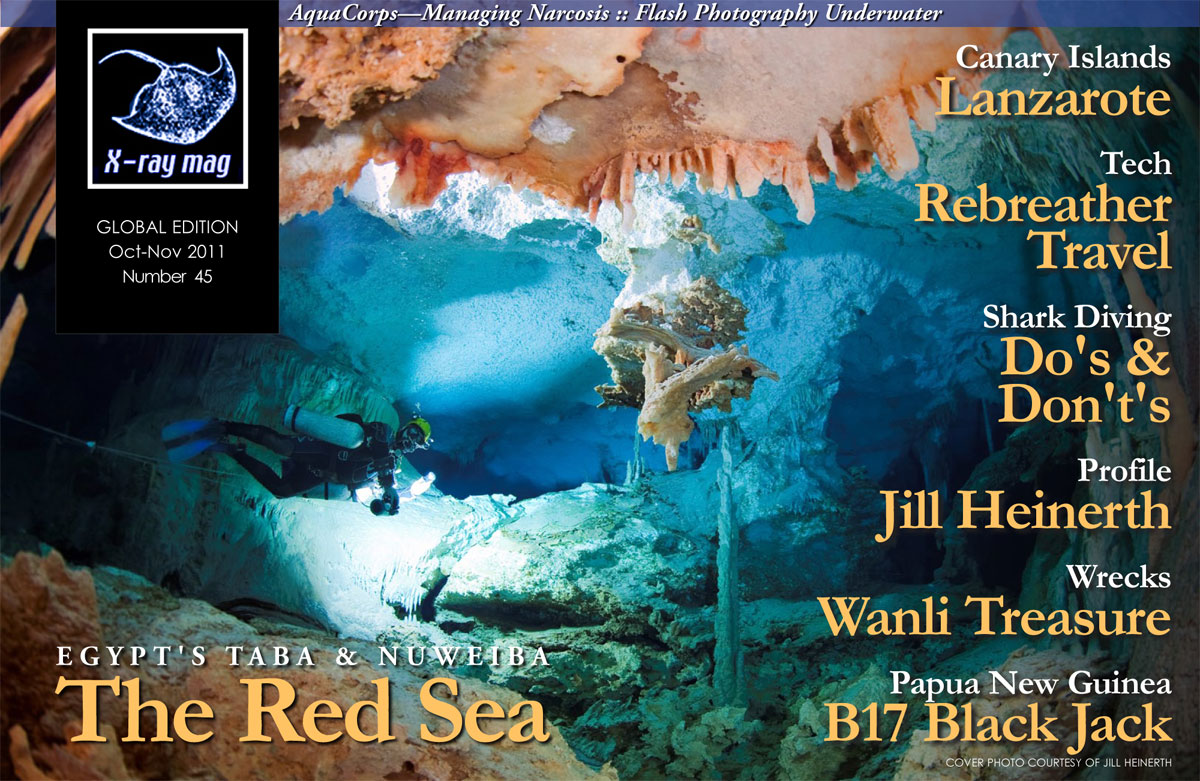A small, warm, sub-tropical Atlantic Ocean island with enough tourist visitors to make access easy and facilities plentiful, diving not mainstream but both good and also dependable—this is Lanzarote.
Contributed by
It is the most easterly, most northerly and fourth largest island of the volcanic chain of the seven main Canary Islands, which are part of Spain but located just off the African coast. Lazarote is only 37 miles (60km) long and 12 miles (20km) wide, with 130 miles (213km) of shoreline. The whole island has Unesco World Biosphere Reserve status and an ecological style of tourism without mass high rise developments.
Lanzarote attracts something around a million visitors a year with its good weather, low rainfall, clean streets, towns and beaches, lack of hassle, low crime and generally informal, friendly atmosphere. About 15,000 of those visitors go diving. In the past, it had a reputation as a ‘get-drunk-and-party’ destination, particularly for British youth, but that reputation has long ago faded with a much more diverse range of visitors now.
The divers range in experience from those doing their first ever dives through to the very experienced. Many divers, having found Lanzarote, treat it as an alternative to the more heavily promoted locations and return time after time.
In some respects, the island offers “a holiday with diving” while some of the many repeat dive visitors seem to think of it as a diving destination first with a smidgen of holiday thrown in. The good mild weather is attractive not just for holidays, which means diving is year round with few days lost due to inclement weather—it’s dependable.
The island is volcanic in origin, as evidenced by underwater escarpments of lava walls, tunnels, caverns and sink holes along with the sandy areas. Marine life is a mixture of tropical and temperate, with reefs volcanic not coral. It’s said there are about 500 species of fish and 1,200 of invertebrates here. Water temperatures run from 19ºC in winter to 23ºC in late summer. With little rainfall, no rivers and unpolluted waters, visibility varies from 15m to 30m.
Lanzarote is one of the seven main islands in the Canaries archipelago, which forms a chain about 500km long off the African coast. All of the volcanic islands started to form some 20 million years ago, with the movement of the African tectonic plate and the submergence of the Atlantic plate. Lanzarote itself started forming about 11 million years ago in three phases with the oldest regions in the north and south of the island followed by later infill between these regions in the second phase four to seven million years ago.
The third phase and latest volcanic activity was in the 17th and 18th centuries and can now by seen in the Timanfaya region. These near-continuous volcanic eruptions in 1730-1736 were devastating, destroying the best farmland along with some 26 villages and hamlets covering a quarter of the island in lava. Smaller eruptions lasting for three months in 1824 produced three more volcanic cones. The results of these eruptions are well preserved, with little erosion due to the limited rainfall. The exact geological mechanisms are not fully understood. The common theory of a mantle plume, or hot spot, in the mantle giving rise to the volcanoes is contested by some.
The shelf around the island drops away to very deep water a mile or more offshore, which may have limited the numbers of naturally occurring wrecks (they end up too deep) and means most diving is near shore. There are a few ...
(...)
















































